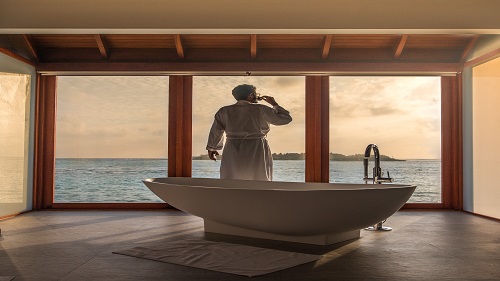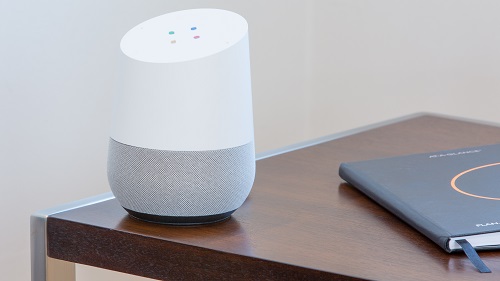We now understand that taking care of our minds is just as essential as nourishing our bodies. But amidst all the self-care rituals and therapy sessions, have you ever considered how your physical surroundings play a pivotal role in shaping your mental well-being? Today, we are diving deep into “The Power of Surroundings: How a Comfortable Home Impacts Your Mental Health.” Get ready to unlock the secrets behind creating an environment that not only embraces comfort but empowers your mind to thrive. It’s time to transform your living space into a sanctuary for serenity and happiness!
The Impact of Home on Mental Health
It’s no secret that our surroundings have a big impact on our mood and overall mental health. In fact, research shows that the home environment can play a significant role in our psychological well-being. For example, one study found that feelings of depression and anxiety were significantly reduced in people who lived in tidy, organized homes.
Creating a comfortable, relaxing home is important for maintaining good mental health. Here are a few ways to do this:
1. Make sure your home is clean and clutter-free. A cluttered environment can be overwhelming and stressful. Keeping your space clean and organized will help you feel more calm and relaxed.
2. Add some plants or flowers to your home. Not only do they look nice, but plants can also improve indoor air quality and help reduce stress levels.
3. Add some personal touches to your decor. Surround yourself with things that make you happy and remind you of good memories. This could include photos, art, or other sentimental items.
4. Make sure your home is well-lit. Good lighting can improve your mood and make your space feel more inviting. Natural light is always best, but if that’s not possible, try using soft white light bulbs instead of harsh fluorescent ones.
5. Create a cozy atmosphere with comfy furniture and textiles . You should feel relaxed and at ease in your own home – so make sure it’s furnished accordingly! Choose furniture that’s comfortable to sit
How the Environment Affects Mental Health
The environment in which we live has a profound impact on our mental health. The quality of our surroundings can affect our mood, energy levels, and overall well-being. A comfortable home is crucial for maintaining good mental health.
There are several ways that the environment can impact mental health. For instance, cluttered or cramped living quarters can cause stress and anxiety. Poor ventilation can lead to feelings of lethargy and depression. And exposure to noise pollution can cause irritability and sleep problems.
Fortunately, there are many things we can do to create a more comfortable and supportive home environment. Here are a few tips:
1) declutter your living space to reduce stress and promote relaxation
2) make sure your home is well-ventilated to improve mood and cognitive function
3) use earplugs or white noise machines to block out noise pollution and improve sleep quality
4) take advantage of natural light by opening curtains and blinds during the day
5) surround yourself with pleasant smells by using scented candles or diffusers
Designing a Space That Brings Comfort and Peace
When most people think of comfort, they think of physical comfort – a comfortable bed, a cozy chair, etc. But comfort is so much more than that. It’s also about your surroundings and how they make you feel.
If your home is cluttered and chaotic, it can be difficult to relax and feel at peace. But if your home is calm and serene, it can be a haven from the outside world and help you to relax and de-stress.
There are many ways to create a space that brings comfort and peace. Here are some ideas:
1. Use calming colors. Stick to cool tones like blue, green, or purple. Warm colors like red or orange can be stimulating and may not promote relaxation.
2. Incorporate nature into your design. Bring in plants or use natural materials like stone or wood. Studies have shown that being around nature can help reduce stress levels.
3. Create an organized space. A tidy room will help you feel more relaxed than one that’s cluttered and chaotic. Take time to declutter regularly and put things away in their proper place.
4. Add personal touches. Make your space your own with photos, art, and other personal items that make you happy. Seeing familiar things around you can help you feel more comfortable and at ease.
5 . Play soft music or sounds of nature . Listening to calming music or sounds of nature can
Different Types of Home Decor to Reduce Stress
Your home should be a safe haven where you can relax and unwind after a long day. However, if your home is cluttered and chaotic, it can actually contribute to your stress levels. Luckily, there are some easy ways to reduce the stress in your home with different types of home decor.
One way to reduce stress in your home is by adding some plants. Studies have shown that being around plants can help to lower cortisol levels, which is the hormone associated with stress. Adding some greenery to your space can help you to feel more calm and relaxed.
Another way to reduce stress in your home is by incorporating some calming colors into your decor. Colors like blue and green have been shown to have a calming effect on the mind and body. Use these colors in your wall paint, bedding, or even in small accents like candles or vases.
If you find that you’re still feeling stressed in your home despite these changes, it might be time to consider some more dramatic changes. You might want to declutter your space and get rid of any excess knick-knacks that are taking up valuable space. You might also want to invest in some new furniture that is more comfortable and inviting. By making small changes, you can transform your space into a haven that will help you to relax and de-stress.
Investing in Quality Furniture for a More Relaxing Home
When it comes to furnishing your home, it’s important to invest in quality pieces that will make you feel relaxed and comfortable. Surrounding yourself with beautiful and functional furniture can have a positive impact on your mental health, helping you to feel more at ease in your own space.
If you’re looking to create a more relaxing home environment, here are a few tips:
Choose furniture that suits your needs: Invest in pieces that you’ll actually use and that fit the specific needs of your space. For instance, if you have a small living room, opt for smaller furniture items that won’t overwhelm the room. Or, if you work from home, make sure to invest in a comfortable office chair and desk.
Pick items that reflect your personal style: Don’t be afraid to express your personality through your furniture choices. Choose items that make you happy and reflect your unique sense of style. This way, your home will feel like an extension of who you are, making it even more enjoyable to spend time there.
Look for quality over quantity: When it comes to furniture, it’s better to invest in fewer high-quality pieces than a bunch of cheap ones. Not only will this save you money in the long run, but it will also help create a more polished look for your home. Be sure to shop around and compare prices before making any major purchases.
Inviting Nature into Your Home
There’s something about being in nature that just feels good. Maybe it’s the fresh air, the sound of the leaves rustling in the wind, or the sunlight shining down through the trees. Whatever it is, there’s no denying that being in nature can have a calming effect on our minds and bodies.
But what if you can’t get outside as much as you’d like? Or what if you live in a city and don’t have easy access to green space?
Don’t worry, there are still plenty of ways to bring nature into your home! Here are a few ideas:
-Start a indoor garden. Not only will you get to enjoy the beauty of your plants, but you’ll also get the satisfaction of watching them grow.
-Decorate with natural elements. Incorporate items like wood, stone, and shells into your décor. You can even find furniture made out of sustainable materials like bamboo.
-Bring the outdoors in with art. Hang paintings or photos of nature scenes on your walls, or display sculptures or pottery that feature natural motifs.
-Use essential oils. Diffusing oils like lavender or eucalyptus can help create a feeling of calmness in your home.
Tips for Creating an Eco-Friendly Living Space
When it comes to creating a comfortable living space, there are a number of factors to consider – from the furniture you choose to the color of the walls. But one element that is often overlooked is how eco-friendly your home is.
Living in an eco-friendly home has a number of benefits, both for your health and for the environment. Here are a few tips for creating an eco-friendly living space:
Choose energy-efficient appliances: When selecting new appliances for your home, look for energy-efficient models that will help you save on your energy bills.
Install solar panels: Solar panels can help you significantly reduce your carbon footprint while also providing you with clean, renewable energy.
Insulate your home: Proper insulation will help keep your home warm in the winter and cool in the summer, saving you money on heating and cooling costs.
Use green building materials: When renovating or building new, use sustainable and environmentally friendly building materials whenever possible.
These are just a few of the many ways you can make your living space more eco-friendly. By taking these steps, you’ll not only be helping the environment, but also improving your own health and well-being.
Conclusion
We hope this article has shown you just how important it is to make sure your home is comfortable and inviting. Not only can creating a cozy environment reduce feelings of stress, but it can also help foster an atmosphere where your mental health flourishes. Whether you’re looking for ways to spruce up the living room or searching for the perfect accessory to add some personality, there are many ways that having a welcoming home can be beneficial. Don’t forget – your surroundings have power: use them wisely!







